#tsai mingliang
Text
青少年哪吒
rebels of the neon god

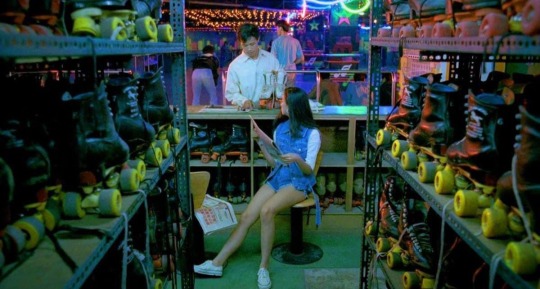
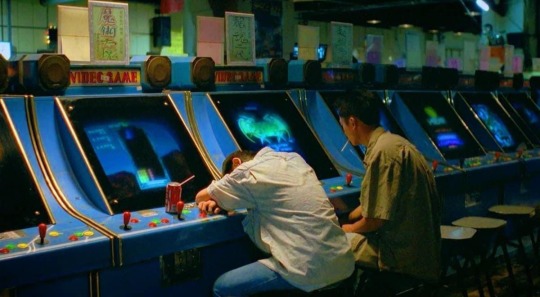
let's leave this place, where do you want to go? how about you? I don't know
#rebels of the neon god#青少年哪吒#tsai ming liang#lee kang sheng#chen chao jung#jen changbin#wang yuwen#asian movies#chinese film#chinese movie#film#1990s#Tsai Mingliang#Liao Penjung
20 notes
·
View notes
Text
Li Nezha, Protector of the Queer Youth in Taiwan. Part 1.
Hello Tumblr!
I have been hard at work assembling the first few posts for this blog, but I would like to start with something relatively lighthearted. Our topic for today is modern depictions of Li Nezha, or most specifically, Nezha as a queer icon in Taiwan.
In the interest of maintiaining a somewhat steady flow of posts, the original form of this post has been broken up. The following posts will expand on the points made here and additionally will discuss the impact of Nezha in the Taiwanese Queer Film scene and it's possible influence on Nezha (2019).
This is an unexpected angle, but one I dearly want to share. Please continue under 'keep reading' if this also interests you.
Before reading a handful of discomforting topics arise. There is mention of suicide in relation to the original myth, the concept of filial cannibalism in relation to the original myth, and discussion of the AIDS crisis.
I would first like to state that the cultural differences between Taiwan and Mainland China are not many, in several aspects they are the same - barring current geopolitical factors. Many fled Mainland China during 1949, a great deal settling in Taiwan. Naturally they brought their culture and worshipped deities with them, Nezha among the wide range of gods brought.
In more recent times the widespread popularity of Nezha in Taiwan is fascinating, though he may not have as many statues or dedicated temples, his ability to excite the younger generations is unmatched by the rest of his pantheon. Overall, Nezha ranks seventh most popular when measured by publicly available shrines or temples (1). But if we are to measure popularity based on the amount of statues that exist Nezha is only outnumbered by the earth-deity Tudi Gong (2). Thus it is understandable Nezha himself became a reflection of the interests of the youth, especially if one considers his image to be of someone unafraid to challenge authority and those that oppress you.
The idea of a queer Nezha is a fairly novel thing though. 1971 saw the publishing of 'Nezha in the Investiture of the Gods' or Fengshenbang li de Nezha (封神榜裡的哪吒) by Xi Song which served almost to fill in numerous gaps in his personality as well as add a more psychological aspect to his rebellion against his father. The novel introduces the father as extremely strict, his brothers envious of him, and a mother who loves but cannot understand him; our result is a deeply melancholic Nezha who frequently ponders the meanining of his own life (3).
Any semblance of homosexual tendency is largely absent until the end of the novel which coincides with the killing of Ao Bing in the original Canonization of the Gods. Nezha is bathing in the river here as well, except he sees Ao Bing through the water's surface. Nezha wants to reach through the water and hold him, and the two play together for a while before Nezha accidentally kills Ao Bing (4). Rather than be demanded to repent, the Nezha here punishes himself for the accident.
Many films concerning Nezha to this point focused more on martial arts spectacles rather than his temperament and personality. However 1992 saw the release of the film 'Rebels of the Neon God' by Tsai Mingliang, though not adapted from the Nezha origin story, concerns the problem of self-indulgent youth in modern society. Interestingly the Chinese title Qingshaonian Nezha (青少年哪吒), can be read two ways: Young Nezha or The Youth as Nezha.
His (Nezha's) name is mentioned three times over the course of the film. The first instance is when one of the youthful protagonist's (Xiaokang) mother is explaining to her husband their son is so misbehaved because he is the reincarnation of Nezha. The second is when two of the protagonists (Xiaokang and Ah Ze) enter a dispute, one of their motorbikes defaced with the phrase "Nezha was here". The final time is when these same protagonists are lamenting their poor luck and are instructed to worship Nezha.
Being a gay man himself it isn't surprising that the homoeroticism portrayed by Xiaokang is later elaborated upon in Mingliang's 'Vive l'amour' (1994) where the quiet Xiaokang is attracted hopelessly to the rowdy playboy character of Ah Rong, so much so that Xiaokang kisses Ah Rong without his knowledge. It concludes with Xiaokang and his father participating together in a dubious homoerotic setting together before recognizing each other in 'The River' (1997).
These films were released surrounding Tsai Mingliang's 1995 documentary about how the AIDS crisis was wracking Taiwan, and against the director's wishes, Mingliang focused heavily on the gay men the disease was affecting most in an attempt to dispel the misinformation about the disease itself and the gay men it was affecting. The previously mentioned 'Rebels of the Neon God' (1992) only featured one explicit mention of the AIDS crisis, Xiaokang vandalizes the side of Ah Ze's motorcycle in bright yellow paint "AIDS". This action is arguably an allegory of Xiaokang's repressed homosexual desires towards Ah Ze (5), the use of the HIV virus synonymous with homosexual engagement - despite it being well known in 1990's Taiwan that there were multiple modes of transmission.
Of course other interpretations of this scene exist, but for our purposes today, it is not only Xiaokang's projection of his own desires but a very literal representation of the idea of a 'contagion' - or the circumstances that draw previously unrelated individuals together. The vandalism of the motorcycle may also be seen in this light (6).

Is it worth drawing comparisons in assuming Xiaokang and all of his homoerotic tendencies is meant to be a stand-in for Nezha himself? I think so. The film (Rebels of the Neon God) presents numerous cases that enforce this idea if you are not yet convinced.
As previously mentioned Xiaokang's mother states that he is a reincarnation of Nezha, a conclusion she reached after seeing a fortune-teller and told as much. It is important to state that the original myth features a Nezha slicing his flesh open to return to his mother, and removed his bones to return them to his father. At first glance it appears to be a case of filial cannibalism (a post topic I am drafting) meant to strengthen the bond between parent and child - but the purpose within the myth is to sever that relationship completely. It can be argued this very literal severing helped bring Nezha into the hearts of the youth who were alienated.
Xiaokang's mother explains this to her husband upon arriving home, telling her husband that Nezha was said to hate his father Li Jing more than anything else, briefly mentions his surname to also be Li, and outright blames Nezha for Xiaokang's poor relationship with him. Upon overhearing this, Xiaokang pretends to be posessed by Nezha before his father launches a rice bowl at his head. The ambivalence of Nezha 'returning his flesh' seems to almost mirror the animosity Xiaokang and his father have throughout the film.
Even the English title 'Rebels of the Neon God' can be read as sharing homophonic resemblance to the name Nezha. 'Neon God' can be a rereading of 'Nezha' in that the first character of his name can also be pronounced as '-nai' which becomes an exact homophone for the Chinese term for neon, while the second character '-zha' is a suffix that plainly suggests deification.
To wrap up this post I would like to thank you for joining me on this foray of a more modern take on Nezha's significance, his overwhelming modernity carrying numerous modes of importance depending on where you are looking. He has not shed his origin myth, rather it informs how he is percieved more than ever - his severing of paternal ties no longer a case of an unfilial child but of someone standing up for themselves in the face of oppression. And it is perhaps this that makes him so attractive to both the young and old of Taiwan, all subjected to the terror and violence of the Chinese Communist Party.
Thank you once more, and I hope to see you again in part 2.
Citations:
(1) Li Fengmao, “Cong Nezha taizi dao Zhongtan yuanshuai: zhongyang-sifang siwei xiade
hujing xiangzheng,” 41–43.
(2) Tsai Wentin, “Taitzu, the Child God,” 53–55.
(3) Xi Song, “Fengshenbang li de Nezha,” 209. A translated portion of Nezha's monologue here is as follows "Oh, Master, my birth is a mistake with no reason at all. Since my childhood, I have understood that I am reared by an overbearing mother and a father with much too high expectations. They seem to have never cared about my actual existence, but intenselyrestrain me with the correct direction of their thinking."
(4) Xi Song, “Fengshenbang li de Nezha,” 217.
(5) Ji Dawei, "Wo kan gu wo zai: chengzhang dianying yu shenfen rentong," 95-105. Dawei's 1996 examination is as follows. "Perhaps Xiaokang resents the fact that Ah Ze is sleeping with a woman, or perhaps he is cursing Ah Ze as homosexual, and thereby taking the identity he himself dislikes, and displacing it onto the figure of the Other. Xiaokang is not sexually active, and therefore he despises those who are and struggles to reject sex altogether. He is terrified he might become a homosexual, and therefore he first verbally attacks others, and then projects onto them the suspicion of homosexuality."
(6) Carlos Rojas, "Nezha Was Here": Structures of Dis/placement in Tsai Ming-liang's "Rebels of the Neon God", 76.
If timestamps for cinematic moments mentioned through this post are requested, I am happy to provide them.
111 notes
·
View notes
Photo



What Time Is It There? (2002) dir. Tsai Ming-liang
45 notes
·
View notes
Text
some queer Taiwanese fiction / tongzhi wenxue
i listened to a lecture by Ta-wei Chi about the new American translation of his Taiwanese tongzhi novel The Membranes; he talks about tongzhi wenxue as a genre distinct from Mainland and Japanese queer fiction, of local invention. This is a short reading list from the lecture:
1. The Membranes (1995)

It is the late twenty-first century, and Momo is the most celebrated dermal care technician in all of T City. Humanity has migrated to domes at the bottom of the sea to escape devastating climate change. The world is dominated by powerful media conglomerates and runs on exploited cyborg labor. Momo prefers to keep to herself, and anyway she’s too busy for other relationships: her clients include some of the city’s best-known media personalities. But after meeting her estranged mother, she begins to explore her true identity, a journey that leads to questioning the bounds of gender, memory, self, and reality.
First published in Taiwan in 1995, The Membranes is a classic of queer speculative fiction in Chinese.
(Columbia University Press)
Bonus:
Ta-wei Chi’s linktree with English translations of other short stories
Translator Prof Heinrich recommends Tsai Mingliang’s Rebels of the Neon God / 青少年哪吒 (1992)
2. Taipei People (1971)

Pai Hsien-yung is among the most important writers in contemporary Chinese and world literature. His masterpiece Taipei People is a classic of Taiwanese modernism; with an intensity of vision comparable to James Joyce’s Dubliners, it follows the individual struggles of the people of Taipei, with a mix of compassion, nostalgia, mourning, and tenacious clarity.
(Columbia University Press)
(Wikipedia)
Chinese + English Translation
3. Crystal Boys (1983)

A-qing, the adolescent hero, comes from an impoverished family. His father casts him out after learning that his son is gay. A-qing drifts into New Park, a gay hangout in Taipei, and begins his life as a hustler. He meets other boys living on the street, also forsaken by their families: Little Jade, who is constantly searching for his unknown father; Mousey, an orphan and petty thief; and Wu Min, a shy tender kid, who attempts suicide when discarded by a middle-aged man. These four boys become fast friends and are taken under the protection of Chief Yang, a fiftyish gay guru in the Park. The boys begin to build a family of their own. Meanwhile, A-qing meets Dragon Prince, whose passionate and faithful love for Phoenix Boy has become a legend of the Park...
(Goodreads)
4. Notes of a Crocodile (1994)

The crocodile is a living iceberg: a great presence that hides ninetenths of itself underwater, with only eyes and nose breaking the surface. To the young university student Lazi, she and those who feel as she does must live like crocodiles, as their sexuality forces them to present a face to the world that looks nothing like their entire selves.
Qiu Miaojin, author of Last Words from Montmartre, displays her mastery of the personal voice in another dark and highly complex story of love between women in an oppressive social context – the first years after the lifting of martial law in Taiwan. A series of eight diary entries tell the story of Lazi’s relationships with others looking to find themselves as she is, and particularly with Shui Ling, a senior classmate with whom she is in love.
This book, dubbed by some as Taiwan’s best novel about sexuality and queer identity tells the hidden stories of dreamers escaping an age of enforced homogeneity. It speaks of pain in the “I” that Qiu Miaojin crafts better than anyone else.
(booksfromtaiwan.tw - including excerpt of English translation)
Bonus:
Chiu Miao-Chin (Qiu Miaojin) (Chinese: 邱妙津; 29 May 1969 – 25 June 1995) was a Taiwanese novelist. Her unapologetically lesbian[1] sensibility has had a profound and lasting influence on LGBT literature in Taiwan. (wiki)
5. Angelwings: Contemporary Queer Fiction from Taiwan (2003)

Lesbian and gay–or queer–fiction (known in Mandarin as tongzhi wenxue) constitutes a major contribution to Taiwanese literature, as evidenced by the remarkable number of prestigious literary awards won by many of the authors of the short stories presented here. Indeed, the meteoric rise of this new genre was a defining feature of Taiwan's literary scene in the 1990s. Queer fiction was also instrumental in forming self-identifying subcultural gay readerships, thus serving a significant political function. But most strikingly, this fiction has been immensely popular with general readers in Taiwan, Hong Kong, and Singapore, as well as in diasporic Chinese communities worldwide. The startlingly fresh, brave voices that speak through these stories attest to the powerful social ferment of the past ten years in Taiwan, which have witnessed a revolution in discourses on sex and sexuality in the public sphere.
Contributors: Chu T'ien-Wen, Qiu Miaojin, Chu T'ien-Hsin, Hsu Yoshen, Lin Yuyi, Lin Chun Ying, Chen Xue, Hong Ling, Chi Tawei, Wu Jiwen.
(UHPress) (Jstor)
Bonus:
Professor Chi’s article about the book (in Trad. Chinese)
Bodhisattva Incarnate in Chinese
#taiwan#queer literature#LGBTQ literature#AAPI month#tongzhi#reading recs#to read#book recs#y'all i'm gonna study so hard
44 notes
·
View notes
Photo
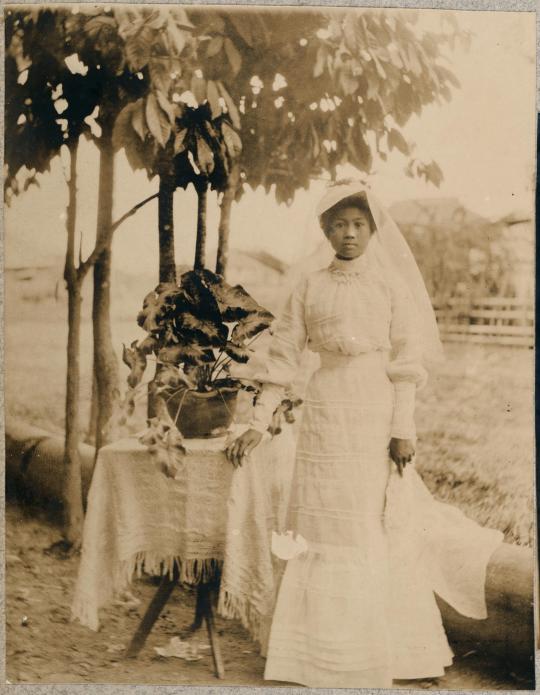


To Pick a Flower
2021, 17 min, color/B&W, HD
Exhibited as part of the group exhibition “Hold the Mirror up to His Gaze: the Early History of Photography in Taiwan (1869-1949)”
2021.03.25 - 08.01
Taipei National Center of Photography and Images
Curated by Hongjohn Lin
Organized by National Taiwan Museum of Fine Arts, National Center of Photography and Images
Exhibiting Artist(s):
Photographer (Photo Studio):
St. Julian Hugh Edwards
John Thomosn
Lai Afong
George Uvedale Price
Endō Photo Studios
Zhudong Photo Studio
Shih Chiang (Erwo Photo Studio)
Lin Cao (Lin Photo Studio)
Chang Chao-Mu (Chang Photo Studio)
Wu Jin-Miao (Jin-Miao Photo Studio)
Lin Shou-Yi (Lin Photo Studio)
Wu Chi-Jhang (Mingliang Photo Studio)
Huang Yu-Jhu (Guanghua Photo Studio)
Long Chin-San
Peng Ruei-Lin (Apollo Photo Studio)
Deng Nan-Guang
Chang Tsai
Lee Ming-Tiao
Artistic Research:
Shireen SENO
Gao Jun-Honn
Chang Chien-Chi
Tsao Liang-Pin
Liang Ting-Yu
ZHUANG Wu-Bin
Chen Fei-hao
Chen Chin-pao
Nowhere Island Journal
To Pick a Flower
My mother used to tell me that our dining table was as old as I am. I wonder how old the tree was when it was cut down and turned into our table. I am fascinated by such processes of transmutation from the natural world to the human realm, and how a tree takes on new lives long after it has been cut down.
I would like to propose a video essay incorporating archival photographs from the American Colonial Era in the Philippines (1898–1946), exploring the sticky relationship between humans and nature and its entanglements with empire.
During my research, I came across a photograph of a young bride posing for an outdoor portrait, but in place of a groom there was a potted plant. An air of uncertainty abounds. Could it be that her groom is running late or has failed to show up? Is she hesitant to enter into marriage with him, or at all? Or perhaps she is just so uncomfortable and just can’t wait for this photograph to be taken? I imagine it was very hot at the time, and here she is under the sun in a heavy, tight-waisted wedding dress.
Later on, I found a similar photograph of another woman posing outdoors next to a potted plant. I’m not sure if she is a bride, but she is wearing formal attire. This time, the woman is not looking at the camera. She is slightly turned to the side, and her gaze is downward to the dirt road at her feet. Her face is not very clear, but she appears to be in some discomfort. Her left-hand rests on the leaves of the small potted plant at her side, which is almost like a pet or a companion, definitely an object of comfort to her.
There’s a tension to image-making that makes it so interesting—to keep moments of life with you, but in doing so, perhaps you also take something away from them. As a friend once said to me, it’s kind of like picking a flower: it’s beautiful and you want to take it, but you’re killing it at the same time. The camera enables us to straddle that fine line between life and death.
Taking plants and trees as a starting point, this work aims to explore the roots and growth of photography and capitalism in the Philippines.
Exhibition overview
“Hold the Mirror up to His Gaze: the Early History of Photography in Taiwan (1869-1949)” examines the power relations of photographic techniques, colonial experience, and modernity. It explores the context of photography prior to the middle of the 20th century in Taiwan. The exhibition features 600 precious images from the National Center of Photography and Images, also combining nine different artistic research projects, to act as a supplement or something like a footnote to the content. This acts serve as supplements to the exhibited photographs. In terms of display, it is presented in the form of Aby Warburg's Atlas Mnemosyne. Through the juxtaposition of montages, the state of high-density compression of a century’s Taiwanese photography is presented. The highly compressed diachronic structure attempts to emerge the possibility of the "hauntology" of the image. This allows us to reevaluate artistic techniques in terms of their politics, culture, and social history in the global scale. Both on implicit and explicit, a glimpse for the image of Taiwan appears in form of writings of light.
“Hold the Mirror Up to His Gaze” has commissioned 9 artistic research projects to intervene in the exhibition, where they act as supplements. These supplements function like footnotes, branching out as addenda to the exhibition. The nature of art research is its non-replicability. It must emphasize the integration of exhibition, research, and heuristic processes, in addition to the epistemology that is born within. Each invited artist has proposed a specific theme by which to intervene into the exhibition and form open-ended discourses.
More:
https://ncpiexhibition.ntmofa.gov.tw/en/Exhibition/SubtopicDetail/21040211465485203?expoId=21011911215622632
7 notes
·
View notes
Photo




Journey to the West dir. Tsai Mingliang. 2014.
Journey to the West is a testament to Malaysian-Chinese filmmaker Tsai Mingliang’s appreciation of the avant-garde; it is a twenty-five minute work consisting of twenty-one sequences of the Walker, a monk garbed in brilliant crimson robes, moving slowly through different locations in Hong Kong over the course of a day. The Walker is always juxtaposed with the vibrant clamor of human activity, standing out amongst the crowds with his nearly imperceptible barefoot steps. The Walker gains an unexpected acolyte, French actor Denis Lavant, who follows him and mimics his slow, measured pace.
Tsai has mentioned interest in developing a productive “ethics of slowness,” perhaps an atonement for the human sins of both reckless impatience and lethargic indolence. Journey to the West deviates from the social expectation that movies provide a consumerist form of entertainment, as the Walker and his haunting steps traverse the boundaries of traditional cinema.
216 notes
·
View notes
Text
Grasshopper Takes U.S. Rights For Tsai Ming-liang’s Berlin Title ‘Days’ (EXCLUSIVE)
Grasshopper Takes U.S. Rights For Tsai Ming-liang’s Berlin Title ‘Days’ (EXCLUSIVE)
Grasshopper Takes U.S. Rights For Tsai Ming-liang’s Berlin Title ‘Days’ (EXCLUSIVE)
Speciality distributor Grasshopper Film has acquired U.S. distribution rights for Taiwanese auteur Tsai Ming-liang’s “Days” and will release the film in cinemas in 2021.
Source link
View On WordPress
0 notes
Photo

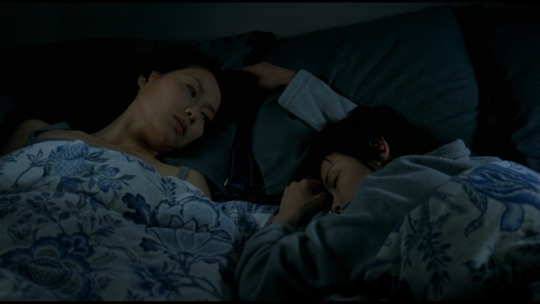

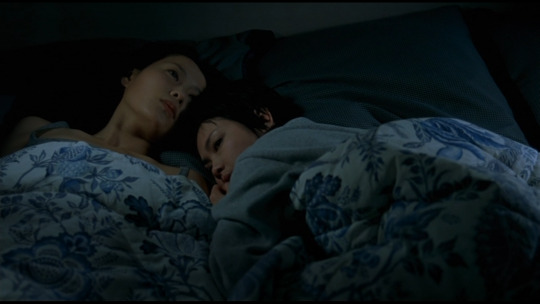
What Time Is It There? (2002) dir. Tsai Ming-liang
7 notes
·
View notes